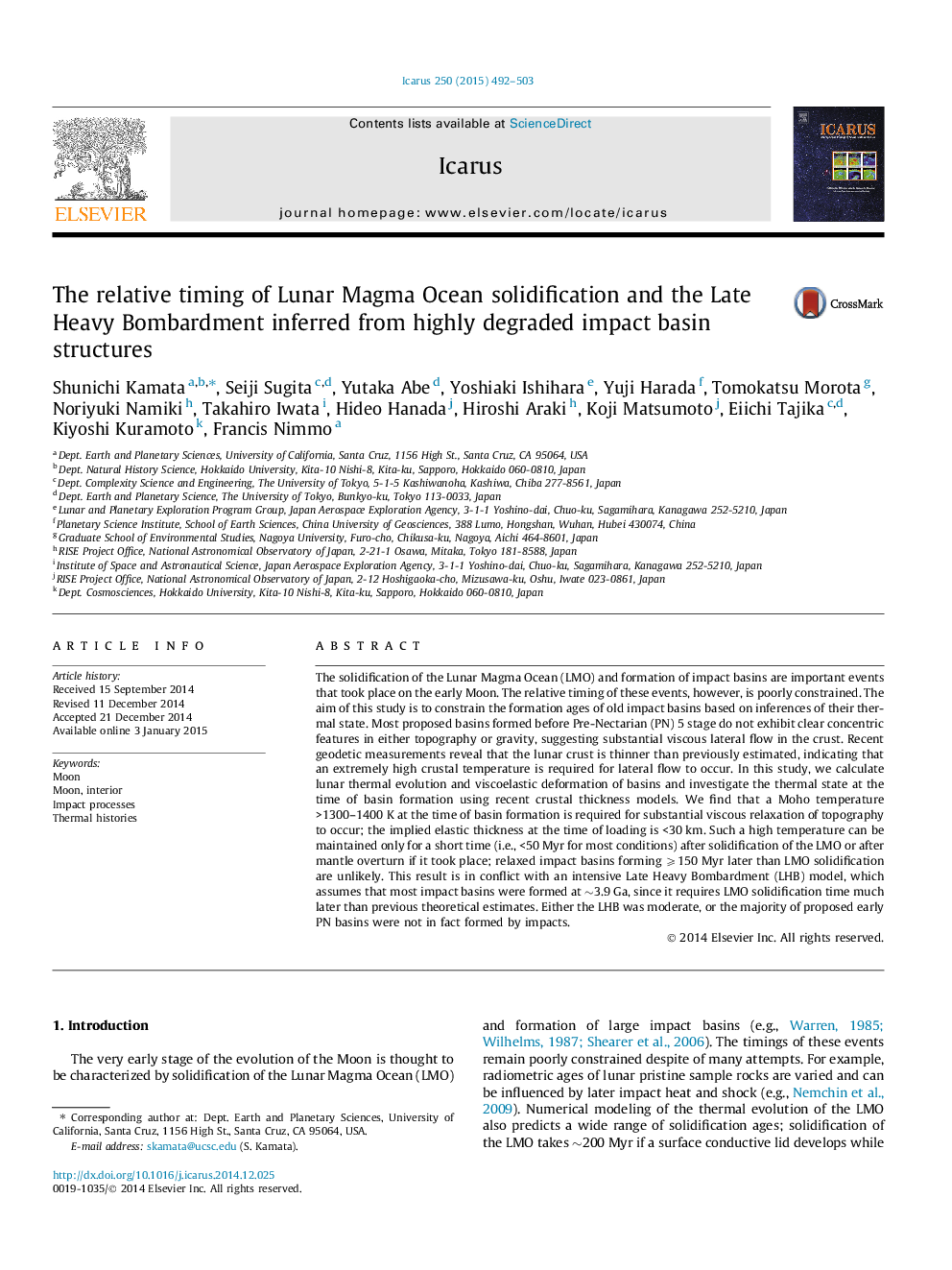| Article ID | Journal | Published Year | Pages | File Type |
|---|---|---|---|---|
| 8136944 | Icarus | 2015 | 12 Pages |
Abstract
The solidification of the Lunar Magma Ocean (LMO) and formation of impact basins are important events that took place on the early Moon. The relative timing of these events, however, is poorly constrained. The aim of this study is to constrain the formation ages of old impact basins based on inferences of their thermal state. Most proposed basins formed before Pre-Nectarian (PN) 5 stage do not exhibit clear concentric features in either topography or gravity, suggesting substantial viscous lateral flow in the crust. Recent geodetic measurements reveal that the lunar crust is thinner than previously estimated, indicating that an extremely high crustal temperature is required for lateral flow to occur. In this study, we calculate lunar thermal evolution and viscoelastic deformation of basins and investigate the thermal state at the time of basin formation using recent crustal thickness models. We find that a Moho temperature >1300-1400 K at the time of basin formation is required for substantial viscous relaxation of topography to occur; the implied elastic thickness at the time of loading is <30 km. Such a high temperature can be maintained only for a short time (i.e., <50 Myr for most conditions) after solidification of the LMO or after mantle overturn if it took place; relaxed impact basins forming ⩾150 Myr later than LMO solidification are unlikely. This result is in conflict with an intensive Late Heavy Bombardment (LHB) model, which assumes that most impact basins were formed at â¼3.9 Ga, since it requires LMO solidification time much later than previous theoretical estimates. Either the LHB was moderate, or the majority of proposed early PN basins were not in fact formed by impacts.
Related Topics
Physical Sciences and Engineering
Earth and Planetary Sciences
Space and Planetary Science
Authors
Shunichi Kamata, Seiji Sugita, Yutaka Abe, Yoshiaki Ishihara, Yuji Harada, Tomokatsu Morota, Noriyuki Namiki, Takahiro Iwata, Hideo Hanada, Hiroshi Araki, Koji Matsumoto, Eiichi Tajika, Kiyoshi Kuramoto, Francis Nimmo,
